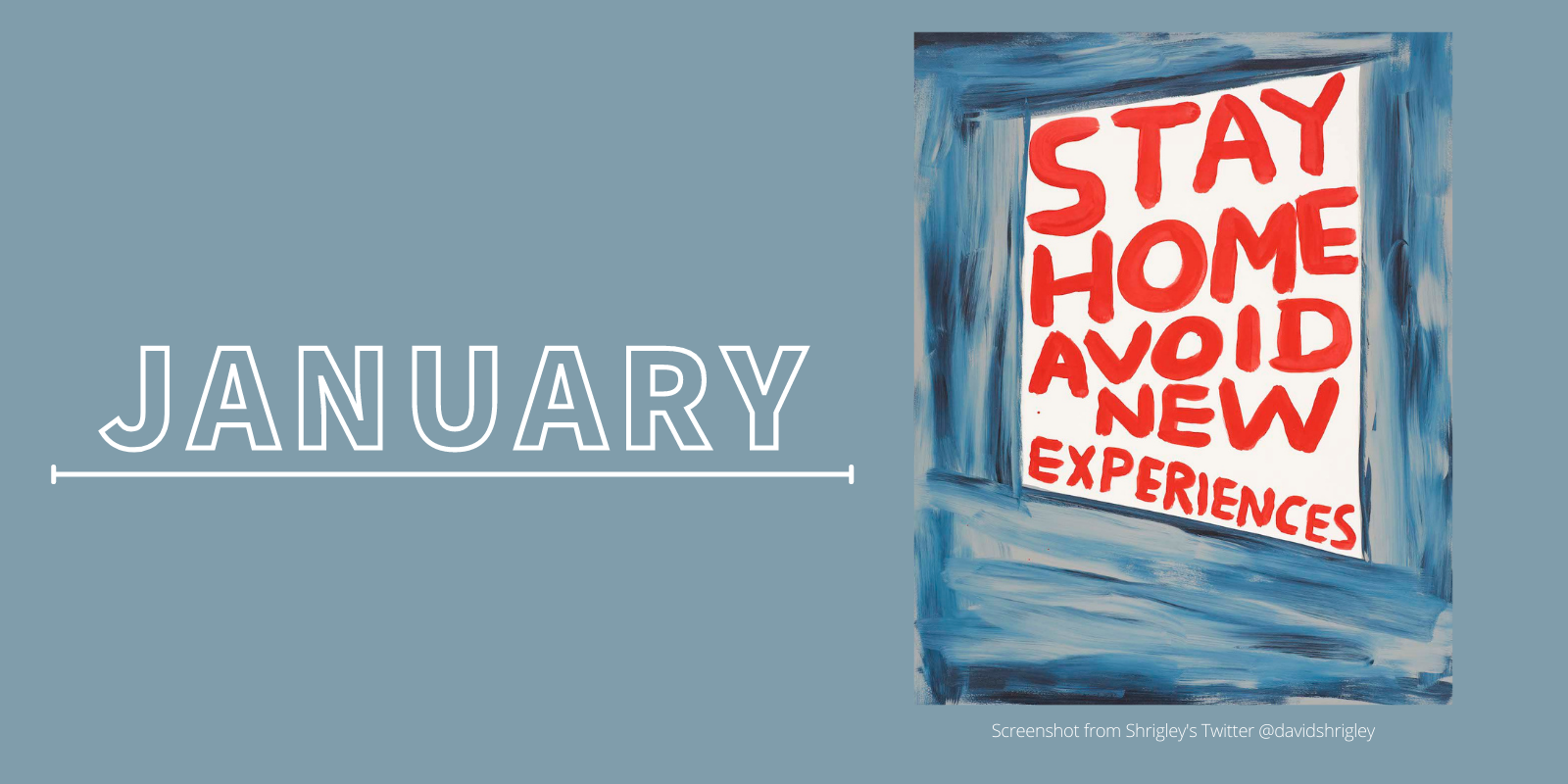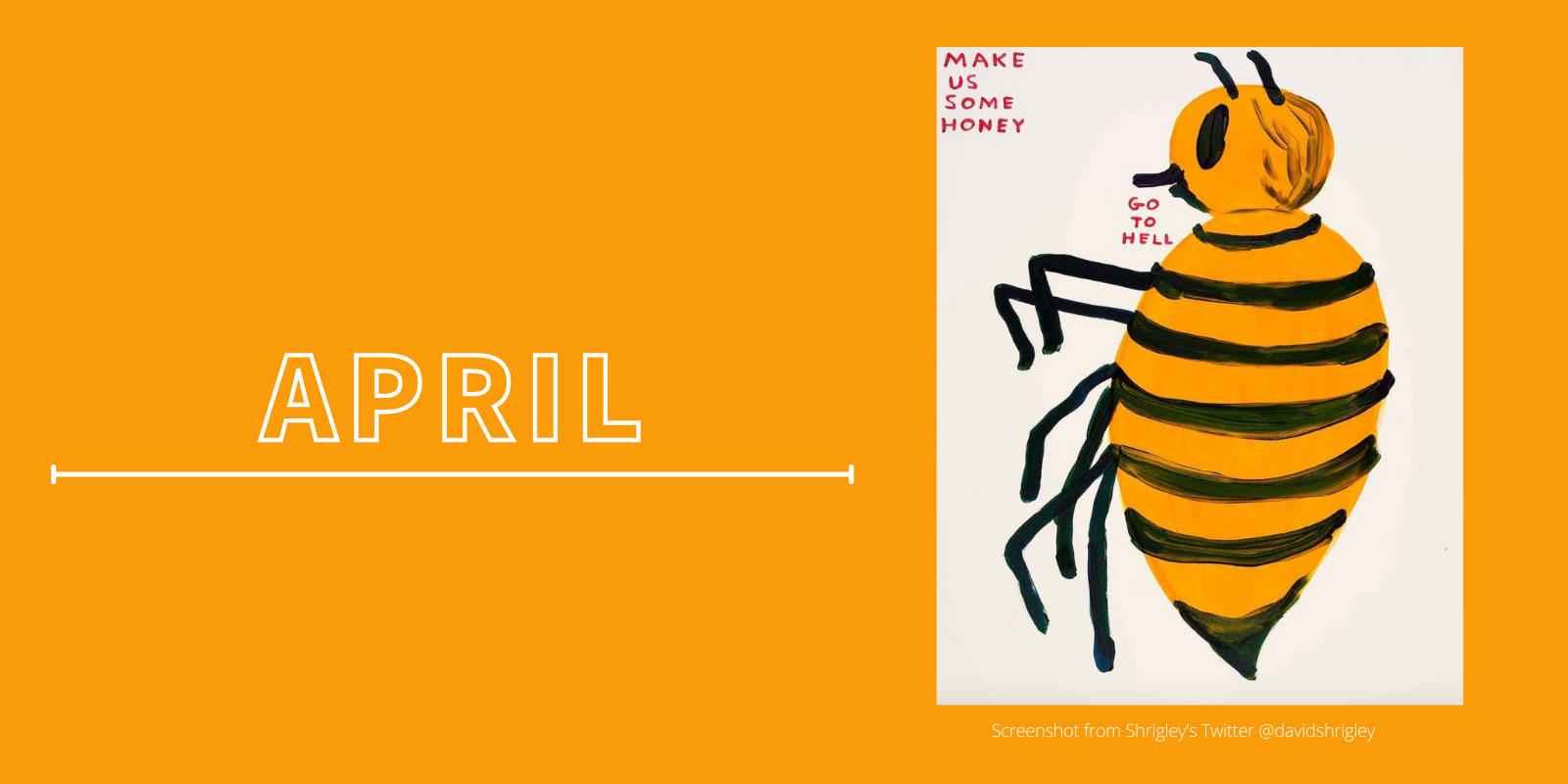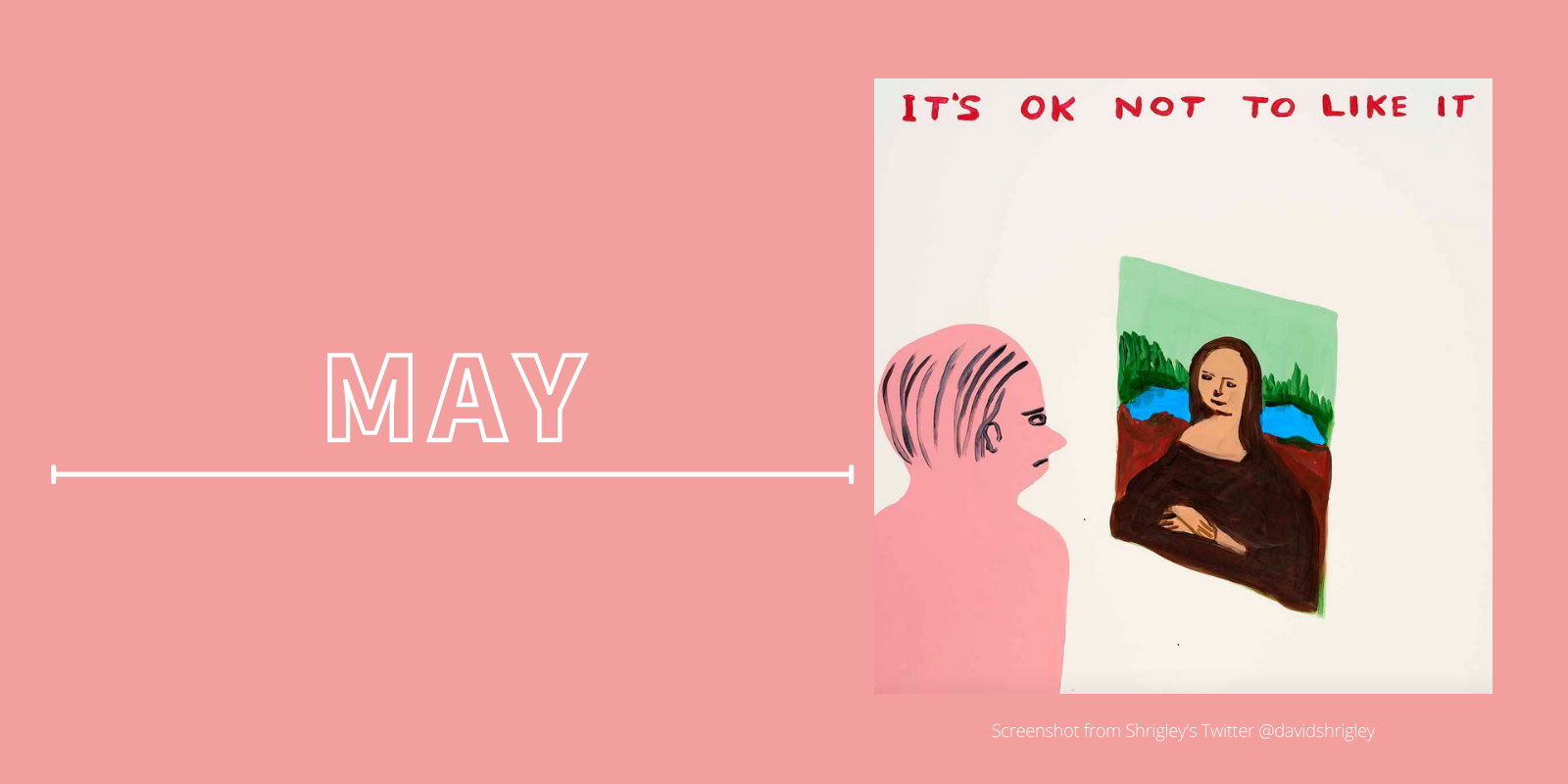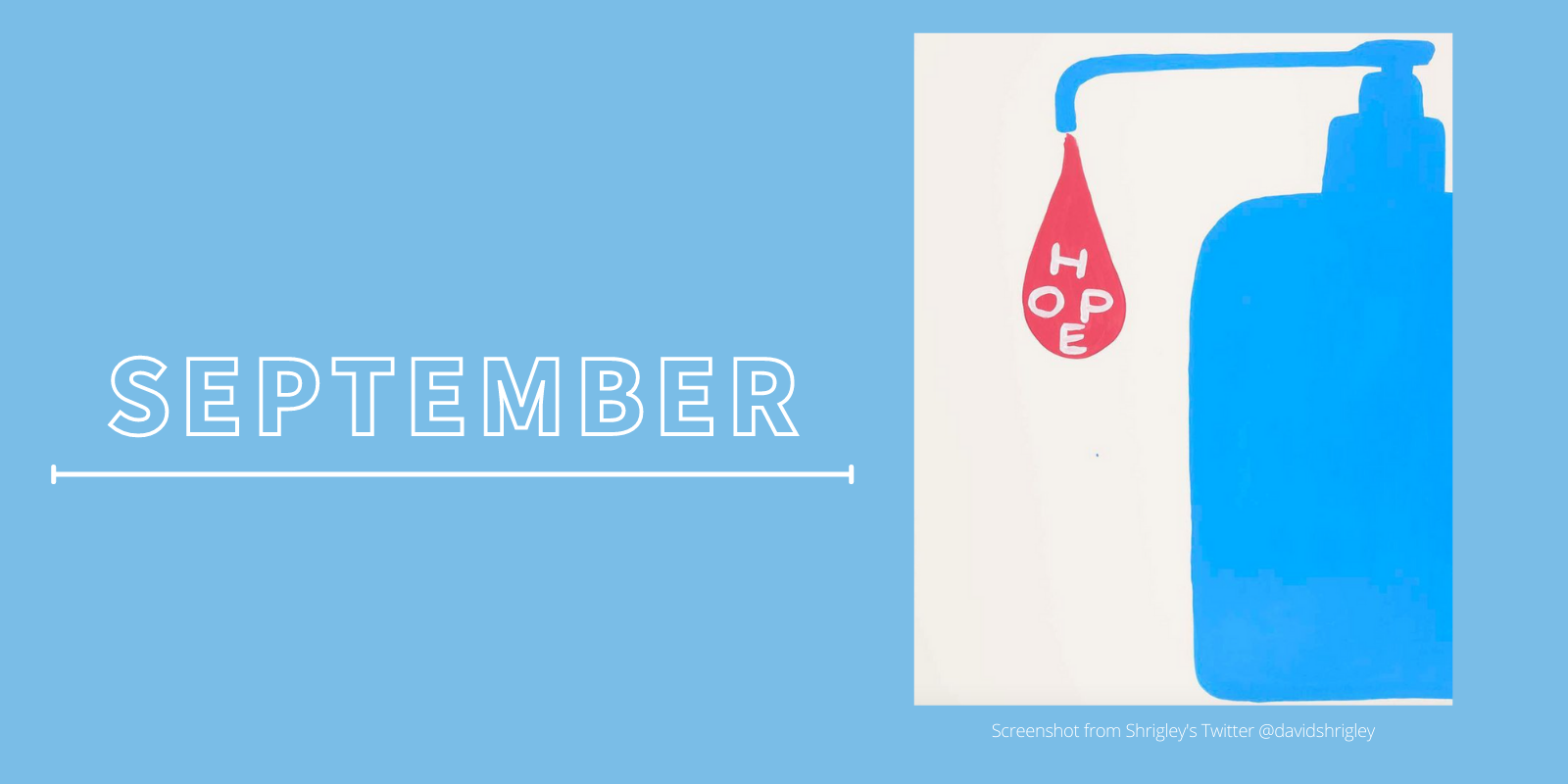A Year Seen Through the Eye of David Shrigley 2021
Can you think of any art that’s friendlier and more entertaining than the everyday doodles of David Shrigley? Shrigley has found his way into many of our lives with his colourful and clever drawings, but the British conceptual artist actually makes work in all kinds of mediums. From animation to neon, music, photography, bronze sculpture, and painting - you name it, he’s done it.
Back when he attended art school in 1991, Shrigley was already known for drawing amusing doodles in his sketchbook, and certainly that sense of humour has carried through to his works today. Shrigley is what we like to call a ‘gateway artist’ - his work, (funny and accessible), has been the entry point for many art lovers to enter the wider contemporary art market. Here we look back on the world events of 2021 through our favourite Shrigley pieces.

We can all agree that 2020 was indeed a tough one, but by December 2020 many of us were all full of hope and wishes for things to be on the up by 2021... Sadly though, January wasn’t up to our expectations, and it wasn't up to Shrigley’s either… 2021 did have a rough start for most of us.

In February 2021, we were still in lockdown around the world. But the world did keep spinning and things kept happening - gladly to kill the boredom we felt while confined by walls. One such notable event that February brought us was the removal of the last statue of the dictator Francisco Franco that remained on Spanish soil.
This act further fueled an ongoing discussion that lay at the intersection of the art world and cultural heritage: should historic artefacts be left untouched, or should we remove such works that no longer align with the moral values and ideas that we hold in society today? This decision strongly echoed the taking down of the statue of slave trader Edward Colston by protesters in Bristol in the UK, in June 2020 so it feels like a certain view and precedent has begun. But just what do these actions and supporting protests mean for the restitution of artworks around the world? As far as the looting of artefacts during the colonial past goes, there’s no doubt that Europe has a lot to answer for - however, we have yet to see serious efforts by the British government and cultural institutions to formally address these burning questions, nor the necessity of creating a well-defined process for restitution claims.

With Covid-19 related restrictions taking a toll on the economy, and particularly on the arts, (whose situation was made even worse by the UK government’s plan to enact a “50% funding cut to arts subjects at universities”), designer and activist Katharine Hamnett started the crowdfunding campaign “CHOOSE ART”, which raised over £200,000 to support artists through these tough times. The revenue generated by selling t-shirts with the words “Choose Art” printed on them was then used to support grassroots contemporary artists by buying their art, and then “donating it to museums and galleries across the country”. Shrigley himself supported the project! Did you know?

In April the media was inundated by polarising public responses to the most controversial Netflix original release of the year - the Seaspiracy documentary. The film got everyone talking about the toll that commercial fishing activities are taking on our oceans, and offered the solution of plant-based lifestyles as a means to tackle the problem. Shrigley himself has said in an interview with the ‘Talk Art’ podcast (Episode: ‘David Shrigley OBE’, April 2019, minute 37:50 to 38:15), that he does not eat meat, but giving up fish feels like too much to ask for most of us. Everyone is entitled to live whatever sustainable lifestyle they want to live, but our burning question is: are animals the only life forms that human action is threatening? Well…If you pay a visit to the Museum of Endangered Foods, (an online platform launched on April 10th), you will learn about other foods which may be on the verge of extinction due to climate change - honey, coffee, and avocados are all featured among the first estimated to disappear by 2050.

The light at the end of the tunnel finally came in May for all the art lovers who were suffering from that notorious ‘digital fatigue’ from when browsing through all the digital galleries and online art fairs - May officially saw museums reopening all around Europe. The iconic Louvre museum in Paris reopened on May 19th, allowing visitors to once again come face-to-face with the Mona Lisa.

Following the lead of museums and other cultural institutions, the month of June started seeing some clubs reopening for the summer season. Partygoers could finally dance their hearts away on the dance floor - that is, if their bodies were up for it after the months of limited movement through the lockdown. Nevertheless, this was a great moment to follow Shrigley’s advice and just “let the music play” and forget the “awful everything” that had happened up until then.

The art world was shaken by a controversial release to which Artscapy paid the utmost attention... Yes, we’re talking about Damien Hirst’s NFT release, ‘The Currency’! Shrigley captured the gist of the conversation around ‘The Currency’ perfectly in this fun drawing - each of the 10,000 artworks created for this sale were different, but somehow still the same. Check out our article where we deconstruct the genius behind this neatly orchestrated art market coup.

If this year hasn’t given you enough reasons to care about climate change, here’s another one: Italy may have registered Europe's hottest temperature on record. The thermometers went up to 48.8Cº on August 11th. Shrigley isn’t the only artist tackling climate change in his practice. Read about other artists making work about the environment or how climate change is changing contemporary art.










